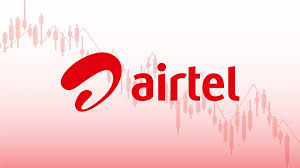Introduction to Airtel
Bharti Airtel Limited, widely known as Airtel, is one of India’s most prominent and influential telecommunications companies, with a legacy that has redefined the way people connect and communicate. Established in 1995 by Sunil Bharti Mittal, the company began as a mobile network operator in Delhi but quickly expanded across India, becoming a pioneer in making mobile services accessible to the masses. Today, Airtel is not only a market leader in India but also a global telecommunications giant with operations in over 17 countries across Asia and Africa.

From the very beginning, Airtel differentiated itself through its customer-first approach and an affordable, inclusive vision. When mobile phones were still considered a luxury, the company revolutionized the industry by making them more affordable and accessible, thus democratizing communication. Over the years, the brand evolved beyond being just a telecom operator, offering a wide range of services, including mobile voice and data services, broadband, DTH television, enterprise solutions, and digital platforms.
Its growth has always been closely linked with innovation and technology leadership. It was among the first operators to roll out 4G services in India and is now leading the charge in 5G connectivity, positioning itself as a brand that symbolizes speed, reliability, and the future of digital India. Its focus on expanding network infrastructure and investing in technology has ensured seamless connectivity for millions of users, even in remote rural areas.
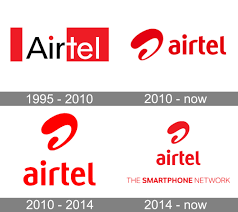
Equally significant is its branding and marketing strategy, which has been central to its success. The company has consistently built campaigns that highlight human connections, relationships, and emotions rather than just technology. Campaigns like “Har Ek Friend Zaroori Hota Hai”, “Jo Tera Hai Wo Mera Hai”, and the iconic Airtel jingle composed by A. R. Rahman became cultural milestones that embedded the brand deeply in the hearts of Indian consumers. Instead of portraying itself merely as a telecom provider, the brand positioned itself as a connector of people, friendships, and aspirations.
In the digital age, Airtel has further evolved its brand identity by focusing on digital ecosystems and lifestyle solutions. Platforms like Airtel Thanks, Wynk Music, Airtel Xstream, and Airtel Payments Bank represent its shift toward becoming a comprehensive digital services provider rather than just a telecom operator. Through these innovations, the company has successfully catered to the lifestyle needs of modern consumers, offering entertainment, financial inclusion, and seamless digital experiences.
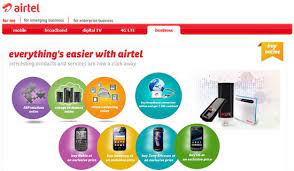
Globally, Airtel enjoys a reputation for excellence, with millions of subscribers across Africa and Asia relying on its services. Its ability to adapt campaigns and strategies to local contexts while maintaining a strong global identity has made it one of the most trusted telecom brands internationally.
In conclusion, Airtel is more than just a telecommunications company—it is a brand that has enabled connections, empowered digital lifestyles, and created cultural touchpoints that go beyond technology. With its continued focus on innovation, customer-centricity, and meaningful branding, Airtel remains a trailblazer in shaping the future of communication in India and beyond.
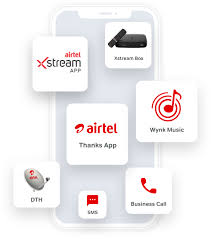
Airtel’s Marketing Campaigns
1. Airtel Signature Tune (1990s–2000s)
The Airtel Signature Tune, composed by the legendary music maestro A. R. Rahman, is one of the most iconic brand anthems in Indian advertising history. Introduced in the late 1990s, during the early years of India’s telecom boom, the tune was not just a jingle but a cultural phenomenon that helped cement its identity as a warm, approachable, and emotionally connected brand.
The brilliance of the tune lay in its simplicity. With Rahman’s magical orchestration blending Indian classical influences with modern global sounds, the song resonated across generations. It was instantly recognizable—whether heard on TV, radio, or mobile phones—and evoked a sense of familiarity, trust, and optimism. Unlike traditional telecom ads that focused purely on technology and tariffs, the brand used this melody to humanize its brand, positioning itself as a bridge that connected people emotionally, not just digitally.

Throughout the 1990s and early 2000s, the tune became Airtel’s audio identity. It accompanied campaigns highlighting themes of friendship, family, and togetherness—reinforcing the idea that Airtel was more than a service provider; it was part of life’s special moments. The emotional depth of the music gave the brand a distinct advantage in a competitive telecom market where other brands leaned heavily on functional messaging.
What made the Airtel Signature Tune truly timeless was its adaptability. It was re-orchestrated in different versions over the years—sometimes peppy, sometimes soulful—but always retaining its core melody. This adaptability ensured that it stayed relevant, while still triggering nostalgia among older audiences.
In essence, the Airtel Signature Tune was not just advertising—it was storytelling through music. It transformed a brand into an emotion and remains one of India’s most enduring sonic identities, proving that sometimes, a simple melody can be more powerful than words.
2. “Jo Tera Hai, Woh Mera Hai” (Early 2000s)
In the early 2000s, as mobile phones were rapidly becoming part of everyday life in India, it launched its memorable “Jo Tera Hai, Woh Mera Hai” campaign, which beautifully captured the essence of sharing and friendship. At a time when telecom advertising was mostly focused on affordability, call rates, and network coverage, the company chose a fresh emotional route that emphasized relationships and human connections.
The commercial depicted college friends bonding over small gestures—sharing books, snacks, jokes, and even secrets—while the background jingle “Jo Tera Hai, Woh Mera Hai” (what’s yours is mine) reinforced the warmth of genuine friendships. The company positioned itself not just as a telecom operator but as a facilitator of togetherness, showing that mobile phones and calls were tools to strengthen relationships, not just transactions.
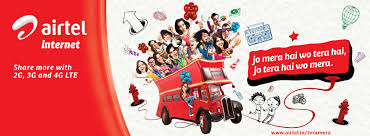
This campaign resonated with India’s youth, who were starting to view mobile connectivity as a means to stay connected to friends even when apart. The simple yet powerful message—that true friendship knows no boundaries and thrives on sharing—made the ad highly relatable and memorable. The brand thus tapped into emotional storytelling rather than rational benefits, which was a differentiator in a crowded market.
“Jo Tera Hai, Woh Mera Hai” also helped build a strong emotional connect with younger audiences, cementing its position as the brand of the youth. The song-like jingle became popular in colleges and schools, further embedding the brand in popular culture.
Overall, the campaign remains a milestone in Indian advertising, remembered for its ability to translate a telecom service into an emotional narrative about friendship, sharing, and belonging. It reinforced its brand identity as one that goes beyond technology—connecting people’s hearts.
3. “Har Ek Friend Zaroori Hota Hai” (2011)
In 2011, Airtel launched one of its most iconic campaigns, “Har Ek Friend Zaroori Hota Hai”, which became an instant cultural phenomenon in India. Conceptualized to appeal to the youth, the campaign built on its positioning as a brand that strengthens bonds and celebrates friendships, but with a refreshing, quirky, and contemporary twist.
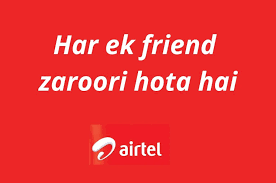
The campaign featured a catchy jingle composed by the legendary A.R. Rahman, with lyrics that humorously described the many different kinds of friends one has in life—be it the foodie friend, the flirt, the joker, or the studious one. Each verse playfully acknowledged the quirks of friendship, concluding with the memorable line, “Har ek friend zaroori hota hai” (every friend is important).
Unlike typical telecom ads that highlighted talk time or data offers, this campaign focused on the emotional and social relevance of mobile connectivity. It cleverly positioned the company as a brand that helps people stay connected with all types of friends, no matter how different or quirky they may be. The campaign celebrated inclusivity, diversity in personalities, and the universal truth that friendships enrich life in countless ways.
The impact was immediate and far-reaching. The song became a youth anthem across schools and colleges, and the phrase “Har ek friend zaroori hota hai” entered everyday conversations, memes, and popular culture. It not only boosted its brand recall but also reinforced its image as India’s youth-centric telecom brand.
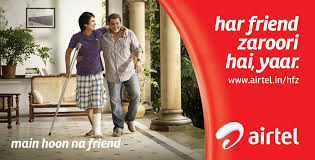
Through this campaign, the company once again demonstrated its strength in emotional storytelling—moving beyond the technical aspects of telecom services to highlight what really matters: the human connections that technology enables. Even today, the campaign is remembered as one of its most endearing and successful marketing initiatives.
4. Airtel 4G Girl – “Sab Kuch Try Karo, Fir Sahi Chuno” (2015)
In 2015, Airtel launched one of its most ambitious and talked-about campaigns with the introduction of the Airtel 4G Girl, featuring actress Sasha Chhetri. The campaign carried the tagline “Sab Kuch Try Karo, Fir Sahi Chuno”, positioning its brand as the first telecom operator to bring pan-India 4G services to customers.

The ads revolved around the confident and cheerful Airtel 4G Girl, who challenged users to test Airtel’s 4G network against any other operator. Her infectious energy, boldness, and direct engagement with consumers made the character memorable and instantly recognizable. The message was simple yet powerful: experience everything, but ultimately choose what delivers the best—Airtel’s 4G.
The campaign marked a turning point in India’s telecom advertising. At a time when 4G was still new and unfamiliar to many consumers, the brand used this bold, challenge-based approach to both educate the market and differentiate itself from competitors. The ads highlighted speed tests, live demos, and peer-to-peer comparisons, giving a tangible feel to the brand’s promise of superior 4G connectivity.
Though the campaign received mixed reactions—ranging from admiration for its boldness to memes poking fun at the Airtel 4G Girl—it undeniably achieved massive visibility. The Airtel 4G Girl became a pop culture icon, with her character sparking countless parodies, discussions, and viral content. Importantly, the campaign succeeded in cementing Airtel as a pioneer in India’s 4G revolution, giving it a strong first-mover advantage before competitors caught up.

With “Sab Kuch Try Karo, Fir Sahi Chuno,” it effectively blended product innovation with emotional recall, making the 4G Girl a symbol of its commitment to offering the fastest, most reliable network to millions of Indians stepping into the digital era.
5. “Open Network” (2016)
In 2016, the company launched one of its most groundbreaking initiatives in the telecom industry—the “Open Network” campaign, aimed at addressing one of the biggest pain points for mobile users in India: network transparency and coverage issues. With rising competition from new players and growing consumer frustration over dropped calls and inconsistent signals, the brand took a bold step by openly sharing its network strengths and weaknesses with customers.
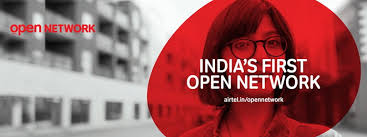
The “Open Network” allowed users to log on to the website or mobile app and access a real-time interactive map displaying the company’s network coverage across India. Customers could check where the signal was strong, weak, or under improvement, and even report problem areas directly to Airtel. This level of openness was unprecedented in the Indian telecom sector, where operators typically avoided acknowledging gaps in service.
The campaign carried a clear message: Airtel was not only listening but also empowering its users to be part of the solution. By democratizing information, the company positioned itself as a transparent, customer-first brand that valued trust and honesty over hollow claims. Advertisements emphasized this openness with the tagline highlighting the “Open Network – India’s first network made open to the public.”
The impact was significant. The initiative was praised for its customer-centric approach, making brand appear more accountable and responsive compared to competitors. It helped reduce frustration among users, created a perception of reliability, and reinforced the brand’s leadership position as a brand committed to improving connectivity.
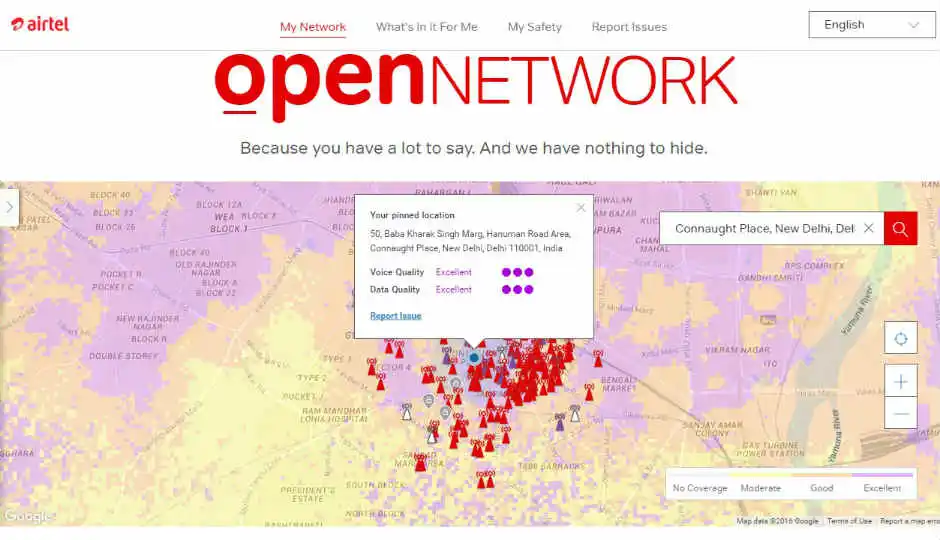
Beyond marketing, the “Open Network” also worked as a strategic move to differentiate Airtel from Reliance Jio, which was entering the market with disruptive promises. By focusing on trust, transparency, and customer engagement, the company not only strengthened its image but also deepened its relationship with millions of users during a highly competitive phase.
6. Airtel Internet TV – “The Future of Entertainment” (2017)
In 2017, the company disrupted the Indian home entertainment market with the launch of Airtel Internet TV, positioning it as “The Future of Entertainment.” This campaign introduced India’s first hybrid set-top box powered by Android TV, merging the world of traditional satellite television with the endless possibilities of the internet.

Aimed at the growing segment of tech-savvy consumers seeking smarter content experiences, Airtel Internet TV allowed users to seamlessly switch between live TV channels and online streaming apps like YouTube, Netflix, and other OTT platforms—all on one screen. The device also came with access to the Google Play Store, voice search, and the ability to download apps, making the television a truly connected smart entertainment hub.
The campaign emphasized convenience and innovation, positioning the brand as a pioneer that was bridging the gap between conventional TV and the on-demand digital revolution. Advertisements showcased how families could enjoy everything—from cricket matches and daily soaps to binge-worthy web series—without juggling between devices. The tagline “The Future of Entertainment” highlighted its commitment to redefining home entertainment for modern India.
Strategically, the campaign was launched at a time when OTT content consumption was rapidly growing, and the Indian market was witnessing a digital shift. Airtel Internet TV thus appealed to young professionals, urban families, and tech enthusiasts who craved a one-stop solution for both TV and internet-based entertainment.
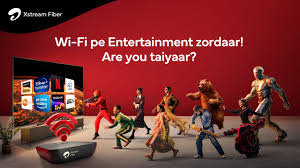
The impact of this campaign was twofold: it reinforced brand identity as an innovator in digital services, and it gave the telecom giant an edge in a market where connectivity and content were converging. By promoting Airtel Internet TV as a symbol of progress and modern lifestyle, it successfully aligned itself with the changing aspirations of Indian households.
7. “Airtel Thanks” (2019)
In 2019, Airtel launched the “Airtel Thanks” campaign, a customer-centric initiative designed to strengthen its relationship with subscribers and reposition the brand as more than just a telecom service provider. The campaign revolved around the idea of gratitude — rewarding loyal customers with exclusive benefits and personalized experiences, packaged under the “Airtel Thanks” program.
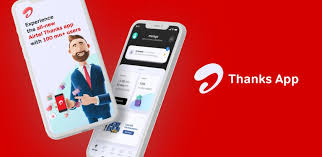
The campaign highlighted how company wanted to thank its users for being a part of its journey, offering them a wide range of rewards that went beyond regular telecom services. Benefits included free access to premium digital content through partnerships with platforms like Amazon Prime Video, Netflix, and ZEE5; exclusive Airtel Xstream access; music streaming; as well as financial services such as Airtel Payments Bank. These bundled offerings transformed the brand from being just a network provider into a digital lifestyle enabler.
Advertisements for “Airtel Thanks” showcased relatable everyday scenarios where its rewards added value to customers’ lives—whether it was binge-watching a favorite show, streaming music, or enjoying seamless online payments. The tone of the campaign was warm and personal, reinforcing the brand’s intent to care for and reward its customers.
Strategically, “Airtel Thanks” came at a crucial time when the Indian telecom market was under intense competition, with data wars driving price reductions. Instead of competing purely on price, the brand chose to differentiate itself by offering added value and exclusive privileges, thereby improving customer stickiness and loyalty.
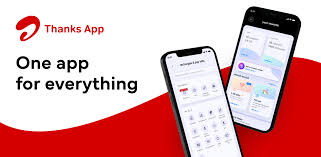
The campaign successfully positioned the brand as a customer-first brand, one that not only provides reliable connectivity but also enriches the digital lifestyle of its users. It resonated with aspirational, tech-savvy Indians who wanted more than just a telecom service—they wanted an ecosystem that made their digital life easier, richer, and more rewarding.
8. “Sab Kuch Try Karo – Airtel Xstream” (2020s)
In the 2020s, the company expanded its digital entertainment ecosystem with the Airtel Xstream platform, positioned as a one-stop destination for movies, TV shows, live channels, and OTT content. To promote it, it revived its iconic positioning line “Sab Kuch Try Karo, Fir Sahi Chuno” in a fresh, digital-first avatar. This campaign sought to connect with India’s increasingly OTT-savvy, experimental audience who love exploring content across genres and platforms before settling on their favorites.

The campaign communicated that Airtel Xstream wasn’t just another streaming app but an integrated content hub bringing together multiple OTT platforms under one roof. By emphasizing the message of “try everything,” the brand encouraged viewers to explore endless choices—regional shows, Bollywood hits, Hollywood blockbusters, sports, and original series—without switching between multiple apps.
Advertising creatives reflected modern digital consumption habits, showing young users navigating through content overload but finding convenience and variety with Xstream. The campaign films, digital ads, and social media creatives reinforced its identity as a tech-forward lifestyle brand, not just a telecom operator.
Strategically, this campaign marked Airtel’s bid to stay relevant in the streaming wars dominated by players like Netflix, Amazon Prime Video, Disney+ Hotstar, and regional OTTs. Instead of competing directly, it positioned Xstream as a content aggregator, offering users simplicity, affordability, and access to a vast digital universe bundled with it services.
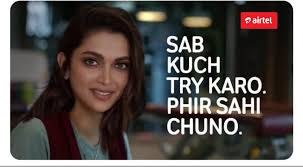
“Sab Kuch Try Karo – Airtel Xstream” resonated with India’s millennial and Gen Z audiences who crave variety, freedom, and flexibility in entertainment. It elevated Airtel’s image from being a network enabler to becoming a digital entertainment partner, further strengthening its ecosystem-driven strategy.
9. Pandemic Campaigns – “Stay Home, Stay Connected” (2020)
In 2020, as the COVID-19 pandemic forced the world into lockdowns, Airtel launched its “Stay Home, Stay Connected” campaign, a timely initiative that highlighted the brand’s commitment to keeping people emotionally and digitally connected during an unprecedented crisis. With work-from-home, online learning, and social distancing becoming the new normal, Airtel positioned itself as a lifeline of connectivity, enabling families, businesses, and communities to stay in touch virtually.
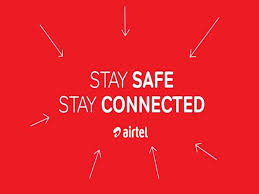
The campaign carried a simple yet powerful message: even when physically apart, people could remain emotionally close through Airtel’s network. Films and digital creatives showcased heartwarming everyday moments—grandparents video-calling grandchildren, students attending online classes, professionals working remotely, and friends connecting over virtual hangouts. These relatable scenarios struck an emotional chord, reinforcing Airtel’s role as more than a telecom provider—it became a bridge of togetherness in times of isolation.
Beyond messaging, Airtel also strengthened its services during the pandemic by offering extended validity, free talk time for low-income customers, enhanced network capacity, and affordable data packs to support remote work and education. This mix of empathetic communication and practical initiatives helped build goodwill and brand trust.
The campaign also leveraged social media and digital platforms, encouraging people to share their stories of staying connected through Airtel. It created a sense of solidarity, assuring customers that the brand stood by them during difficult times.

“Stay Home, Stay Connected” not only reflected Airtel’s brand ethos of keeping India connected but also positioned it as a responsible, empathetic brand in a crisis. By aligning with the collective emotions of hope, resilience, and togetherness, Airtel deepened its relationship with customers at a time when reliable connectivity was nothing short of essential.
10. “Future is Airtel 5G Plus” (2022 onwards)
In 2022, Airtel unveiled its “Future is Airtel 5G Plus” campaign, marking the beginning of India’s next digital revolution. The campaign positioned Airtel as not just a telecom operator but a technology enabler, shaping how individuals, businesses, and communities experience the future of connectivity. With 5G promising ultra-fast speeds, low latency, and seamless performance, Airtel’s communication emphasized how this technology would redefine everyday life—from entertainment and education to healthcare, work, and beyond.
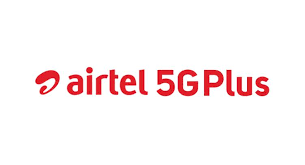
The campaign showcased futuristic scenarios that felt immediately relatable: students experiencing immersive online learning through AR/VR, gamers enjoying lag-free cloud gaming, doctors performing remote consultations, and businesses unlocking new efficiencies with AI and IoT. By framing 5G as more than speed—a gateway to possibilities—Airtel tapped into the aspirations of India’s digitally hungry youth and tech-savvy consumers.
Visually, the campaign was sleek, modern, and futuristic, highlighting the transformative power of “Airtel 5G Plus”. Through TVCs, digital ads, influencer collaborations, and experiential activations, Airtel invited users to imagine a future where their ambitions and lifestyle demands are supported by reliable next-gen connectivity. It also positioned Airtel’s network as “India-ready”, reinforcing trust that its 5G rollout would be robust and widespread.
Strategically, the campaign also underscored Airtel’s first-mover advantage. With its early 5G deployments in major cities, the brand highlighted that the future is already here and accessible to customers. This blend of futuristic storytelling with immediate utility strengthened Airtel’s leadership image.
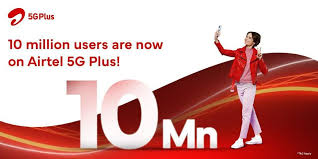
“Future is Airtel 5G Plus” is more than a marketing line—it is a vision statement, aligning Airtel with India’s digital growth story. By fusing technology, aspiration, and reliability, Airtel positioned itself as the brand powering the nation’s leap into the future.
Conclusion on Airtel’s Marketing Campaigns
Airtel’s marketing journey is a testament to how a brand can evolve with time while staying emotionally connected to its audience. From its early years in the 1990s, when the Airtel Signature Tune became an anthem of connection, to campaigns like “Jo Tera Hai, Woh Mera Hai” that emphasized unity and shared bonds, Airtel consistently used advertising as a tool to build relationships rather than just sell services.
As the telecom landscape grew competitive, Airtel pivoted to youth-focused storytelling with campaigns such as the Airtel 4G Girl (2015), which positioned it as a bold challenger brand ready to prove its superiority. This was followed by “Open Network” (2016), which showcased radical transparency and invited customers into the brand’s ecosystem, a move that differentiated Airtel from rivals in a price-sensitive market.
With digital adoption accelerating, campaigns like Airtel Internet TV, Airtel Thanks, and Airtel Xstream highlighted the brand’s shift from being a traditional telecom operator to a digital lifestyle enabler. During the pandemic, Airtel adapted with empathy-driven communication like “Stay Home, Stay Connected” (2020), reinforcing its role as a lifeline during uncertain times.
The launch of “Future is Airtel 5G Plus” (2022 onwards) signaled Airtel’s commitment to leading India’s digital future, positioning it as not just a service provider but a nation-builder in connectivity and innovation.
Across decades, Airtel’s campaigns have balanced emotional resonance and technological leadership, making it one of the most trusted and aspirational telecom brands in India. Its marketing success lies in its ability to constantly reinvent while keeping the core promise intact: keeping people connected, empowered, and future-ready.

